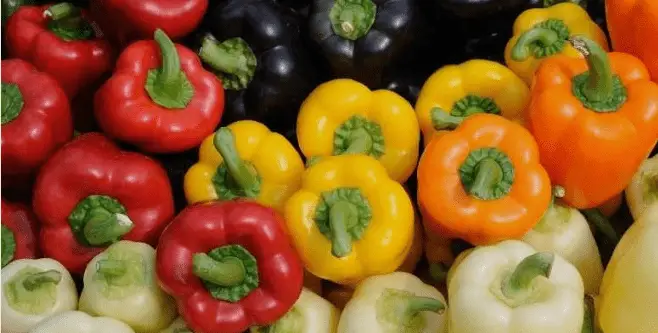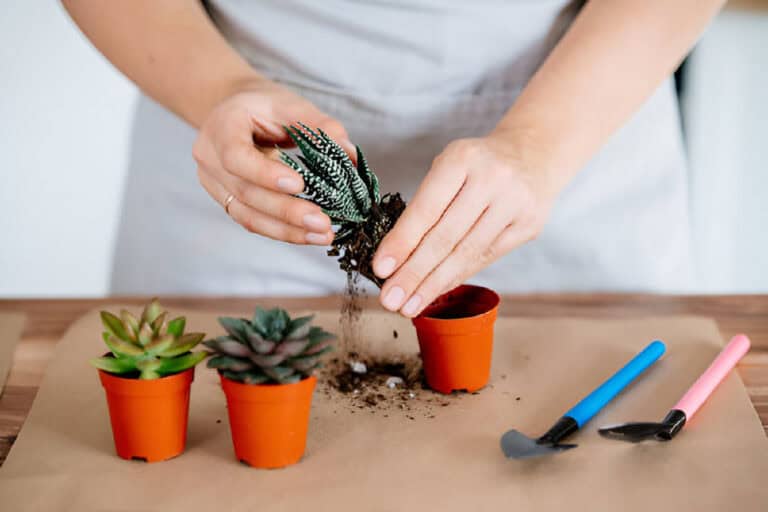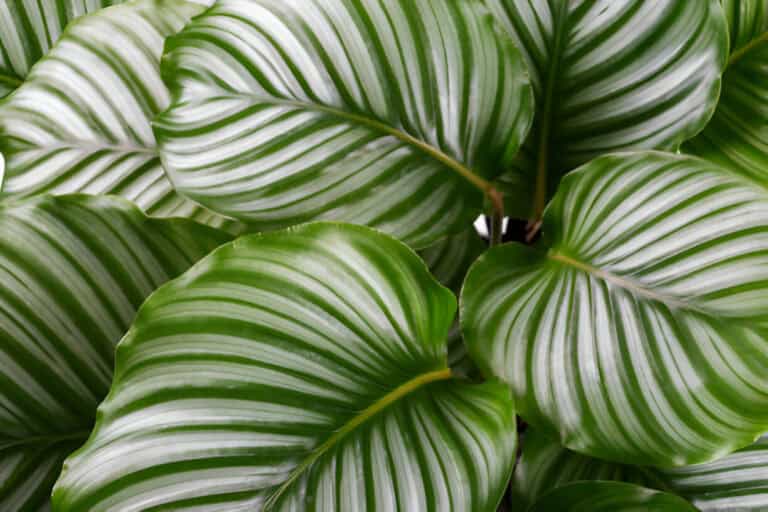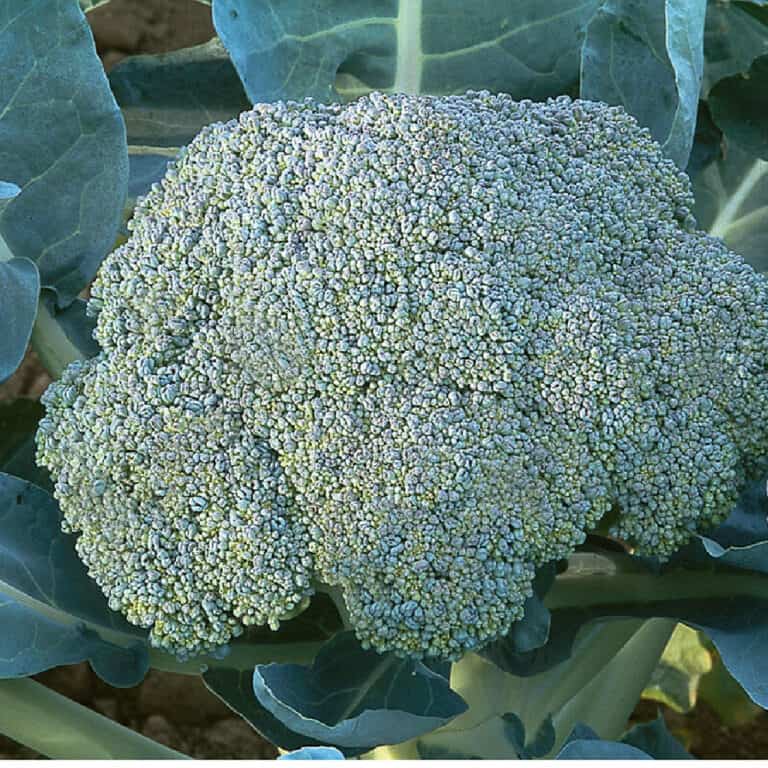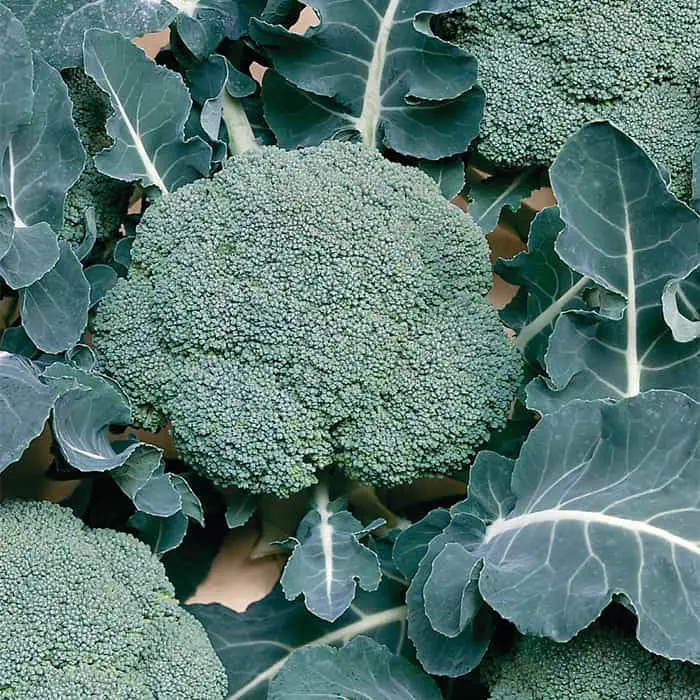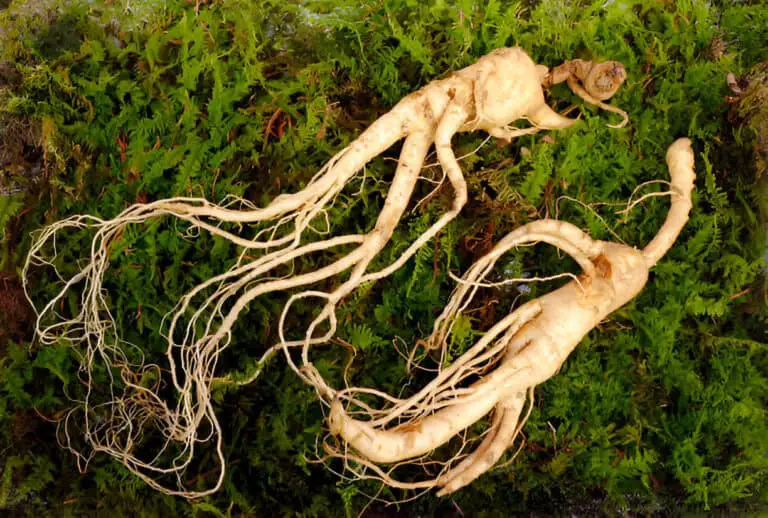How Far Apart to Plant Brussel Sprouts? How Much Spacing Area Needed?
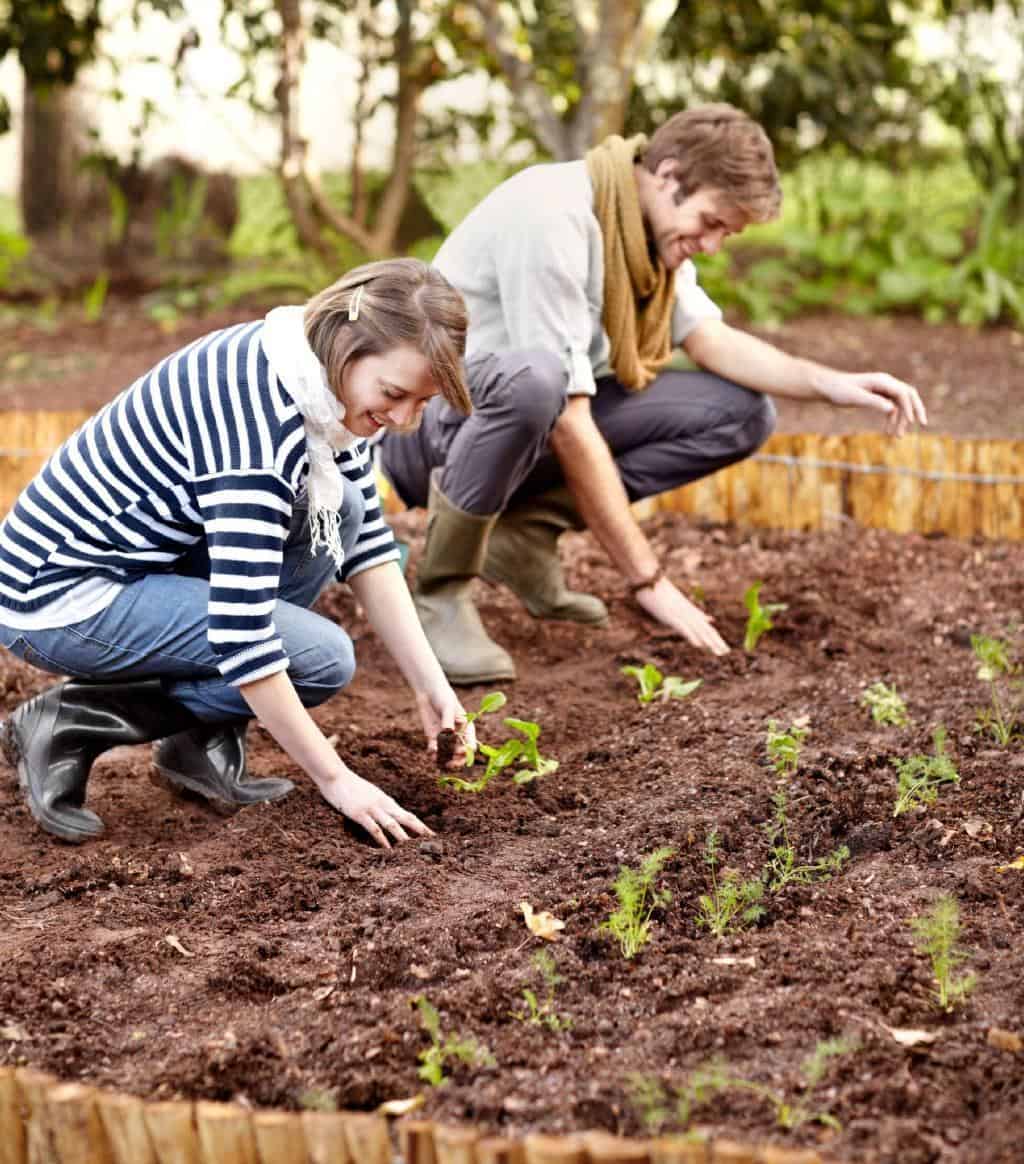
Are you ready to embark on the journey of growing your own delicious Brussels sprouts? These miniature cabbage-like gems can add a delightful touch to your vegetable garden and bring a burst of flavor to your dinner table. But before you get your hands dirty, there’s an important question to answer: How far apart should you plant Brussels sprouts, and how much spacing area do they need?
Proper spacing is the secret ingredient to successful Brussels sprout cultivation. Just like people, these plants need their personal space to thrive. By giving them adequate room to spread their leafy wings, you’re ensuring they have access to vital resources like sunlight, water, and nutrients. But finding the perfect balance can be a bit tricky.
Don’t fret! In this article, we’ll guide you through the ins and outs of Brussels sprout spacing. From the optimal distance between plants to the recommended spacing area, we’ve got you covered. So let’s dig in, quite literally, and discover the secrets to growing magnificent Brussels sprouts with just the right amount of breathing room.
Importance of Proper Spacing in Planting Brussels Sprouts
Proper spacing is of utmost importance when it comes to planting Brussels sprouts. These compact vegetables require enough room to grow and develop into healthy, robust plants. With adequate spacing, each individual plant can receive the necessary sunlight, water, and nutrients to thrive and produce a bountiful harvest.
When Brussels sprouts are crowded together, they face several challenges. Firstly, they compete for sunlight. Sunlight is vital for photosynthesis, the process by which plants convert sunlight into energy.
If the plants are too close together, their leaves may overlap, shading each other and reducing the amount of sunlight they receive. This can result in stunted growth and a decrease in overall productivity.
In addition to sunlight, proper spacing ensures that each plant has access to an adequate water supply. Water is essential for transporting nutrients throughout the plant and maintaining turgidity in the cells. When Brussels sprouts are planted too closely, their roots may compete for water, leading to water stress and negatively impacting their growth and development.
Another important factor that spacing affects is nutrient availability. Each Brussels sprout plant requires a sufficient supply of nutrients to support its growth and produce high-quality sprouts. When plants are crowded, they have to compete for nutrients present in the soil. Inadequate nutrient uptake can lead to nutrient deficiencies, weakening the plants and reducing their yield potential.
Factors to Consider When Planting Brussels Sprouts

Before determining the spacing requirements for Brussels sprouts, it’s essential to consider several factors that can affect their growth. By understanding these factors, you can provide the ideal conditions for your Brussels sprouts to flourish.
- Soil Requirements and Preparation:
- Brussels sprouts prefer well-draining soil rich in organic matter.
- Prepare the soil by adding compost or aged manure to enhance fertility and drainage.
- Climate Considerations:
- Brussels sprouts thrive in cool climates with temperatures ranging between 45°F and 75°F (7°C and 24°C).
- They require a growing season of approximately 90 to 100 days without prolonged periods of extreme heat.
- Sunlight and Shade Requirements:
- Brussels sprouts need full sun exposure for at least six hours a day to promote healthy growth and maximize yield.
- Avoid planting them in areas with excessive shade, as it can lead to leggy plants and reduced sprout formation.
- Watering and Drainage Needs:
- Brussels sprouts require consistent moisture to develop properly.
- Adequate drainage is essential to prevent waterlogged soil, which can lead to root rot and other diseases.
Optimal Spacing for Brussels Sprouts
To give Brussels sprouts the space they need to grow and thrive, it’s important to follow optimal spacing guidelines. Here are the key considerations for spacing your Brussels sprout plants:
- Recommended Distance Between Plants:
- Leave approximately 24 to 36 inches (61 to 91 centimeters) of space between each Brussels sprout plant.
- This spacing allows the plants to develop a robust root system and prevents competition for nutrients and sunlight.
- Row Spacing for Efficient Growth:
- Maintain a distance of 36 to 48 inches (91 to 122 centimeters) between rows.
- Sufficient row spacing ensures proper air circulation, reduces the risk of disease, and facilitates easier maintenance and harvesting.
- Importance of Giving Each Plant Enough Room:
- Providing ample space between Brussels sprout plants allows them to grow and expand without overcrowding.
- Squeezing plants too close together can stunt their growth and lead to smaller sprouts.
- Preventing Overcrowding and Promoting Airflow:
- Overcrowded plants are more susceptible to diseases and pests due to limited airflow.
- Ample spacing allows better air circulation, minimizing the risk of fungal infections and improving overall plant health.
Calculating Spacing Requirements for Brussels Sprouts
Calculating the spacing requirements for Brussels sprouts involves considering the mature size of the plants, accounting for their growth and spread, planning for adequate space between rows, and adjusting based on the variety and growing conditions.
- Determining the Mature Size of Brussels Sprouts:
- Brussels sprouts can reach a height of 2 to 3 feet (61 to 91 centimeters) at maturity, with a similar width.
- Consider this size when determining the spacing between plants and rows.
- Accounting for Plant Growth and Spread:
- Brussels sprouts plants develop a central stalk with sprouts forming along its length.
- Allow enough space between plants to accommodate the spread of the lower leaves and the formation of sprouts on the stalk.
- Planning for Adequate Space Between Rows:
- Consider the space needed to access and work between rows comfortably.
- Leave enough room for weeding, watering, and other maintenance activities.
- Adjusting Spacing Based on Variety and Growing Conditions:
- Some Brussels sprout varieties may require more or less space based on their growth habits.
- Adapt the spacing based on the specific recommendations provided by the seed packet or plant nursery.
Spacing Brussel Sprouts in Raised Beds
If you are growing Brussels sprouts in raised beds, you can modify the spacing recommendations slightly. Due to the typically looser and more fertile soil in raised beds, you can plant Brussels sprouts a bit closer together. A spacing of around 12 to 18 inches between plants and 18 to 24 inches between rows is suitable for Brussels sprouts in raised beds.
Spacing Brussel Sprouts in Containers
Growing Brussels sprouts in containers is a viable option, especially for those with limited garden space or who prefer the convenience of container gardening. When it comes to spacing Brussels sprouts in containers, it’s essential to choose a container with a sufficient diameter and depth to accommodate the plant’s root system.
A container with a diameter of at least 18 inches is recommended for each Brussels sprouts plant. This allows ample space for the roots to spread out and ensures proper nutrient uptake. If you are growing multiple plants in the same container, maintain a spacing of 18 to 24 inches between each plant to prevent overcrowding.
Techniques for Measuring and Marking Spacing
Accurate measurement and marking of spacing is essential to ensure consistency and precision in your Brussels sprout planting. Here are some techniques to help you achieve this:
- Using Measuring Tools for Accuracy:
- Utilize a measuring tape, ruler, or spacing tool to maintain consistent distances between plants and rows.
- This helps ensure uniform spacing and optimal growth for each Brussels sprout plant.
- Creating a Planting Grid or Template:
- Design a planting grid or template on paper or using stakes and string to guide your planting.
- This method simplifies the process and helps maintain even spacing throughout the garden bed.
- Marking Spacing Intervals with Stakes or Flags:
- Place stakes or flags at the designated intervals to mark where each Brussels sprout plant should be positioned.
- This visual guide makes it easier to plant at the correct spacing and maintain consistency.
- Ensuring Consistent Spacing Throughout the Garden Bed:
- Regularly check and adjust spacing as you progress with planting.
- Take measurements periodically to ensure adherence to the desired spacing guidelines.
Common Mistakes to Avoid When Spacing Brussels Sprouts
To optimize the growth and yield of your Brussels sprouts, it’s crucial to avoid these common spacing mistakes:
- Planting Too Closely Together:
- Overcrowding Brussels sprouts leads to competition for resources, stunted growth, and smaller sprouts.
- Follow the recommended spacing guidelines to allow each plant enough space to thrive.
- Neglecting to Consider Plant Size at Maturity:
- Brussels sprouts can become quite large at maturity, with an extensive spread of leaves and sprouts.
- Failure to account for this size can result in overcrowding and restricted growth.
- Failing to Account for Neighboring Plants:
- Brussels sprouts need adequate space not only for their own growth but also to avoid shading and crowding neighboring plants.
- Consider the spacing requirements of other plants in the vicinity when planning your Brussels sprout layout.
- Underestimating the Need for Proper Airflow:
- Insufficient airflow around Brussels sprouts can create a humid environment that promotes disease development.
- Providing enough space between plants and rows enhances air circulation and reduces the risk of fungal infections.
By understanding these spacing considerations and avoiding these common mistakes, you can set the stage for healthy and productive Brussels sprout plants in your garden.
Companion Planting with Brussels Sprouts
Companion planting is a gardening technique where specific plants are grown together to enhance growth, deter pests, and improve overall plant health. When it comes to Brussels sprouts, there are several companion plants that can benefit their growth and deter pests. Consider the following points for successful companion planting with Brussels sprouts:
- Compatible and Incompatible Plant Pairings: Brussels sprouts thrive when grown alongside plants such as beets, carrots, onions, and herbs like dill, mint, and thyme. However, they should be kept away from plants like strawberries, tomatoes, and pole beans, as they may hinder their growth.
- Benefits of Companion Plants for Brussels Sprouts: Companion plants can provide numerous benefits to Brussels sprouts. Some companions, like dill and mint, attract beneficial insects that help control pests. Others, such as beets and carrots, can act as natural mulch, shading the soil and conserving moisture.
- Maximizing Garden Space through Strategic Planting: Companion planting allows you to maximize your garden space by intercropping compatible plants with Brussels sprouts. This efficient use of space not only enhances overall productivity but also helps suppress weeds and encourages biodiversity in your garden.
- Pest Control through Companion Planting: Certain companion plants have the ability to repel or deter pests that commonly affect Brussels sprouts. For example, planting aromatic herbs like thyme or sage near Brussels sprouts can discourage pests such as aphids and cabbage worms.
Maintaining Proper Spacing as Brussels Sprouts Grow
As Brussels sprouts mature, they require sufficient space for healthy growth and proper airflow. Follow these practices to maintain adequate spacing as your Brussels sprouts develop:
- Thinning Out Excess Seedlings or Sprouts: If you have started Brussels sprouts from seeds, thin out any excess seedlings to maintain the recommended spacing. Remove weaker or overcrowded seedlings, leaving only the strongest ones to grow.
- Transplanting or Relocating Overcrowded Plants: If you notice overcrowding among your Brussels sprout seedlings or young plants, consider transplanting them to a new location with appropriate spacing. This will give each plant enough room to develop fully.
- Pruning or Removing Lower Leaves for Airflow: As your Brussels sprouts grow taller and produce more leaves, it’s beneficial to prune or remove the lower leaves. This helps improve airflow around the plants, reducing the risk of fungal diseases and promoting healthier growth.
- Regular Monitoring and Adjusting Spacing as Needed: Throughout the growing season, regularly monitor the spacing between your Brussels sprout plants. If you notice plants encroaching on one another or becoming too crowded, make the necessary adjustments by gently transplanting or thinning them out.
Additional Tips for Successful Brussels Sprout Spacing
To ensure the best results with Brussels sprouts spacing, consider these additional tips:
- Rotating Crops to Prevent Disease and Pest Buildup: Practice crop rotation to avoid planting Brussels sprouts in the same spot year after year. This helps prevent the buildup of pests and diseases that can affect the health and spacing of your plants.
- Mulching to Conserve Moisture and Suppress Weeds: Apply a layer of organic mulch around your Brussels sprouts to conserve moisture, regulate soil temperature, and suppress weed growth. Mulching also helps to maintain a clean and organized planting area.
- Providing Support for Tall or Heavy Plants: Some Brussels sprout varieties can grow tall and may require support to prevent bending or breakage. Consider using stakes or cages to provide support and maintain proper spacing even as the plants mature.
- Observing and Adjusting Spacing Based on Individual Plant Growth: Remember that every garden and plant is unique. Observe the growth and development of your Brussels sprouts throughout the season and make adjustments to spacing as needed. Flexibility and adaptability are key to successful gardening.
By understanding the importance of spacing and implementing these practices, you can ensure healthy growth, optimal yields, and delicious Brussels sprouts in your garden. Enjoy the process of nurturing your plants and savor the flavorful rewards of your efforts!
Conclusion
Proper spacing is essential for the successful growth of Brussels sprouts. By providing adequate space between plants and rows, you allow each plant to receive the necessary sunlight, water, and nutrients for optimal growth. Consider the specific variety, soil fertility, climate, support structures, and personal preferences when determining the spacing requirements.
Whether you’re planting Brussels sprouts in the ground, in raised beds, or in containers, following the recommended spacing guidelines will ensure healthy and productive plants. So, give your Brussels sprouts the space they need, and enjoy a bountiful harvest of these delicious, miniature cabbages!

